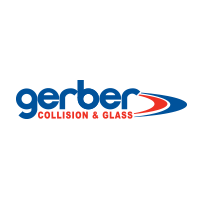Don’t Let Driving Home Turn Into a ‘Trick’ for You This Halloween
Sober Driving is the Only Treat you Need; Remember: Buzzed Driving is Drunk Driving
Gerber Collision and Glass reminds all party goers this Halloween not to be tricked into thinking that it’s okay to drive after a few drinks because you’ve only got a “buzz on.”
Gerber Collision and Glass warns Halloween revelers, “Whether you’ve had one too many, or way too many, make sure you don’t turn the drive home into a horror show. A sober and safe ride after the party is the best treat you can give yourself and everyone else on the road this Halloween.”
Nighttime is always a dangerous time on the road, but Halloween night can be particularly scary if you get behind the wheel drunk. According to the National Highway Traffic Safety Administration, 41 percent of all highway fatalities throughout the nation during the Halloween period in 2010 involved a driver or a motorcycle rider with a blood alcohol concentration of .08 grams per deciliter or higher.
Gerber Collision and Glass recommends these simple tips for a safe Halloween:
- Plan a safe way home before the festivities begin.
- Before drinking, designate a sober driver.
- If you’re impaired, take a taxi, call a sober friend or family member, or use public transportation.
- Use your community’s sober ride program
- If you see a drunk driver on the road, contact local law enforcement.
- And remember, if you know someone who is about to drive or ride while impaired, take their keys and help them make other arrangements to get to where they are going safely.
For more information, please visit www.TrafficSafetyMarketing.gov.









 Driving in inclement weather is not fun. It can become dangerous very quickly. Heavy winds and sideways rain can move your vehicle all over the road. Throw in some lightning and you’ve got a mess on your hands. Gerber Collision and Glass want to go over a few crucial details everyone should know when faced with rough weather behind the wheel.
Driving in inclement weather is not fun. It can become dangerous very quickly. Heavy winds and sideways rain can move your vehicle all over the road. Throw in some lightning and you’ve got a mess on your hands. Gerber Collision and Glass want to go over a few crucial details everyone should know when faced with rough weather behind the wheel.








